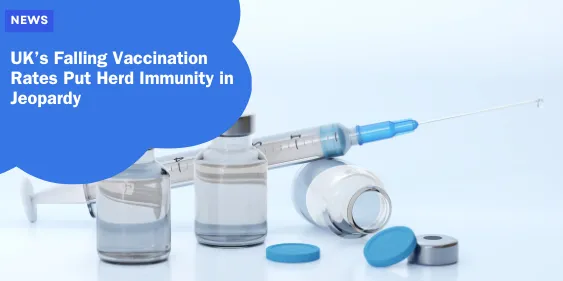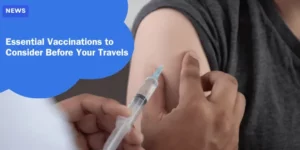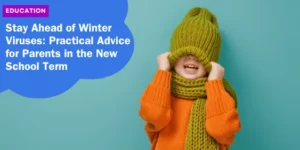UK’s Falling Vaccination Rates Put Herd Immunity in Jeopardy
Por: Maria Eduarda em September 12, 2024

Health officials in the United Kingdom are sounding alarm bells over a disturbing trend in vaccination rates. The country’s declining uptake of routine immunizations has reached a critical juncture, significantly jeopardizing children’s health and heightening their vulnerability to severe diseases. Experts warn that the diminishing coverage for essential vaccines, such as those for whooping cough and measles, has dropped below the levels necessary to prevent outbreaks effectively.
Alarmingly Low Vaccination Rates
Recent figures from the UK Health Security Agency (UKHSA), covering January to March, reveal only a marginal increase in some vaccination rates. Specifically, there was a modest 0.3% rise in booster jabs for pre-schoolers under five years old. Despite this small improvement, the overall vaccination targets remain unmet.
The World Health Organization (WHO) recommends that at least 95% of children under five be vaccinated to sustain herd immunity. Unfortunately, the UK continues to fall short of this crucial benchmark.
Disparities in Regional Vaccination Coverage
A detailed analysis of vaccination data reveals notable disparities in coverage across the UK. For the six-in-one jab, which protects against whooping cough, polio, and tetanus, as well as the measles, mumps, and rubella (MMR) vaccine, the situation varies significantly by region.
- Scotland and Wales: These regions have achieved or surpassed the WHO’s 95% vaccination target.
- UK-wide: The overall picture is less promising. Only 91.5% of children under two have received the six-in-one jab. This percentage drops to a concerning 84.5% within the entire under-five age group.
Furthermore, coverage for the first dose of the MMR vaccine (MMR1), given at around one year of age, has decreased by 0.5%, resulting in only 92.5% of children being vaccinated. Although the second dose of the MMR vaccine (MMR2), administered between ages three and five, has seen a slight 0.2% increase, it still reaches only 85.2% of the targeted population.
Rising Threat of Whooping Cough
Professor Sir Andrew Pollard, head of the UK’s vaccine committee and a leading paediatrician, has expressed grave concerns about the increasing incidence of whooping cough, also known as pertussis or the “100-day cough.” This disease is especially perilous for infants and young children.
Whooping cough symptoms initially mimic those of a common cold, including a runny nose and sore throat. After about a week, the condition can progress to severe coughing fits that may last several minutes and typically worsen at night. Infants might also exhibit a distinctive “whoop” sound or experience difficulty breathing following a coughing episode.
The bacteria responsible for whooping cough are transmitted through coughs and sneezes, prompting experts to recommend that family members of infected individuals stay at home until three weeks after symptoms begin or 48 hours after starting antibiotics.
Persistent Concerns with Measles
Measles remains a significant public health concern. The NHS recently launched a campaign encouraging parents to vaccinate their children against this highly contagious disease. There has been a marked increase in measles cases since late last year, with several clusters emerging, particularly in London, which has the lowest child vaccine uptake rate in England.
Measles is recognized for its high transmissibility. When vaccination rates decline, the virus can spread rapidly, posing severe health risks. Although measles usually resolves within 10 days, it can lead to serious complications such as blindness, seizures, and meningitis.
Urgent Need for Increased Public Awareness
The current vaccination landscape in the UK underscores the urgent need for enhanced public awareness and proactive measures to improve vaccination rates. Health officials emphasize that vaccines play a crucial role in protecting public health by preventing the spread of infectious diseases.
Parents are strongly encouraged to ensure that their children receive all recommended vaccinations on time. Additionally, targeted efforts are necessary to address regional disparities in vaccination coverage. By focusing on areas with lower uptake rates, such as London, and implementing localized awareness campaigns, it is hoped that more children can be safeguarded against preventable diseases.
Conclusion
The UK faces a pivotal moment in its public health journey. With vaccination rates falling short of WHO targets, the risk of outbreaks of diseases like whooping cough and measles has increased significantly. Immediate action is required to reverse this trend and protect the nation’s children. Through collective efforts, increased public awareness, and targeted vaccination campaigns, it is possible to enhance vaccination coverage and ensure that all children are shielded from preventable diseases. The challenge is significant, but timely and effective action can make a crucial difference in maintaining public health.






